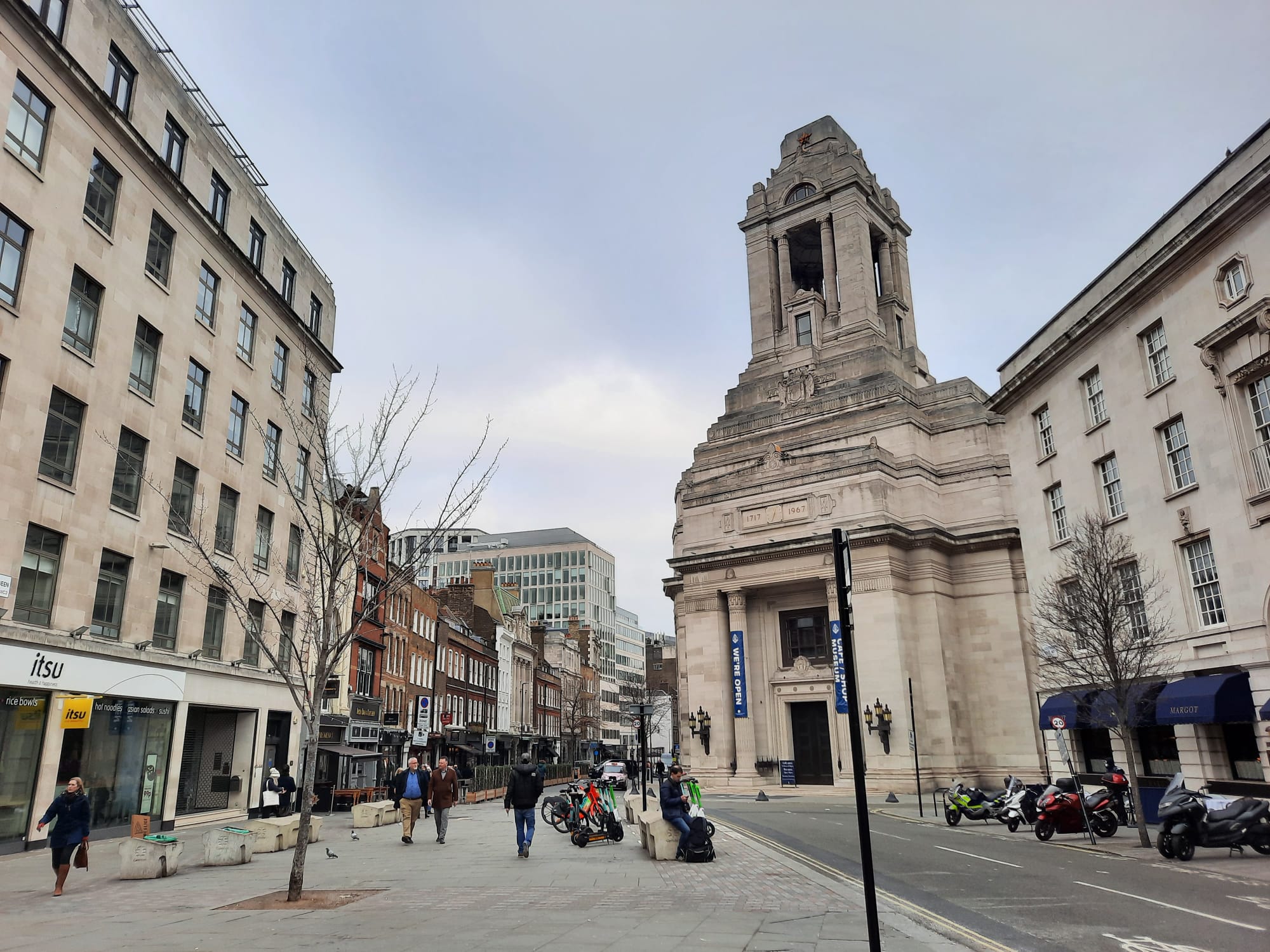Museum of Freemasonry, London
Learn all about the Freemasons at the Museum of Freemasonry. Worth it for the glimpse into their London headquarters alone.
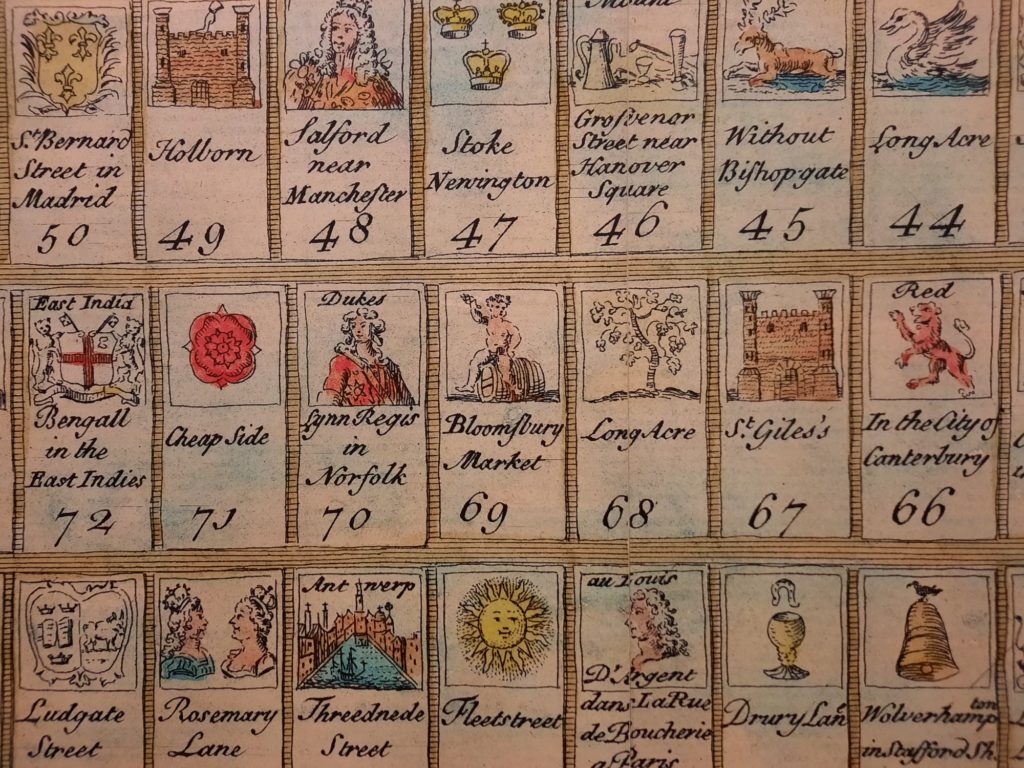
Freemasonry? Shouldn’t That Be Secret?
If you’ve heard of the Freemasons or Freemasonry, you may have some preconceived ideas about them. You might know that there is some sort of connection to stone masons. Maybe you’re imagining unusual handshakes and rituals. You probably have the idea that it’s all very secretive. And to some degree you’d be right on all fronts.
Freemasonry evolved from medieval stonemason guilds (or possibly Rosicrucianism?). Guilds were very common in medieval Europe, and were a means of transmitting knowledge of a craft as well as protecting its members. Members went from Apprentice to Journeyman/Fellow to Master (a structure still followed by Freemasonry today). Something interesting seems to have happened with the stonemasons’ guild, however. Over time, they became more ceremonial. They even began to take on ‘speculative’ members who were not practicing stonemasons at all. By around 1600, lodges which we would recognise as early Freemason lodges were beginning to emerge.
Today Freemasonry is practiced in many countries. Lodges can be “Regular” (belief in a Supreme Being, no women, no talking about politics or religion) or “Continental” (less adherence to one or more of the original rules). Individual lodges are supervised by a Grand Lodge. There isn’t one overall body regulating the whole thing – Grand Lodges may not even recognise each other as legitimate. The museum we will visit today is part of Freemasons’ Hall, headquarters of the United Grand Lodge of England.
Even today, Freemasons pledge oaths to protect the secrecy of certain aspects of the order. This is maybe not surprising as all guilds were initially about protecting and monopolising trade secrets. But it has given rise to a lot of conspiracy theories over the years. In the internet age it’s no longer possible to keep secrets as easily. This may account for Freemasonry becoming less secretive in recent decades, although it appears this trend began earlier. You can read an interesting perspective on Freemasonry and secrets here.

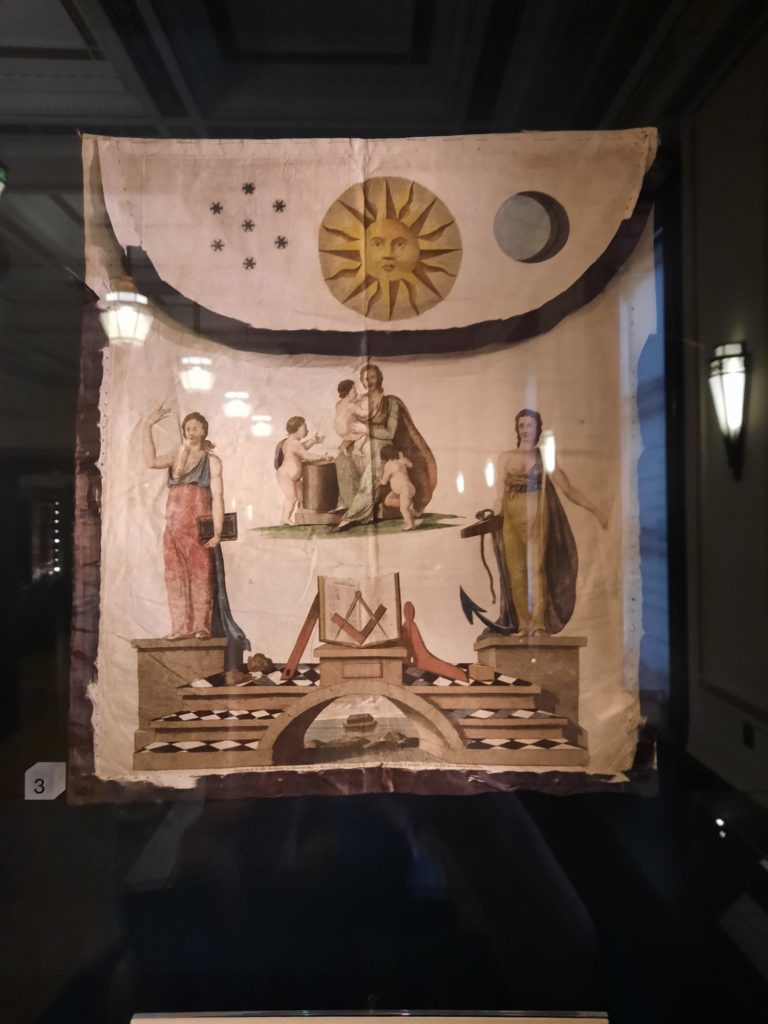
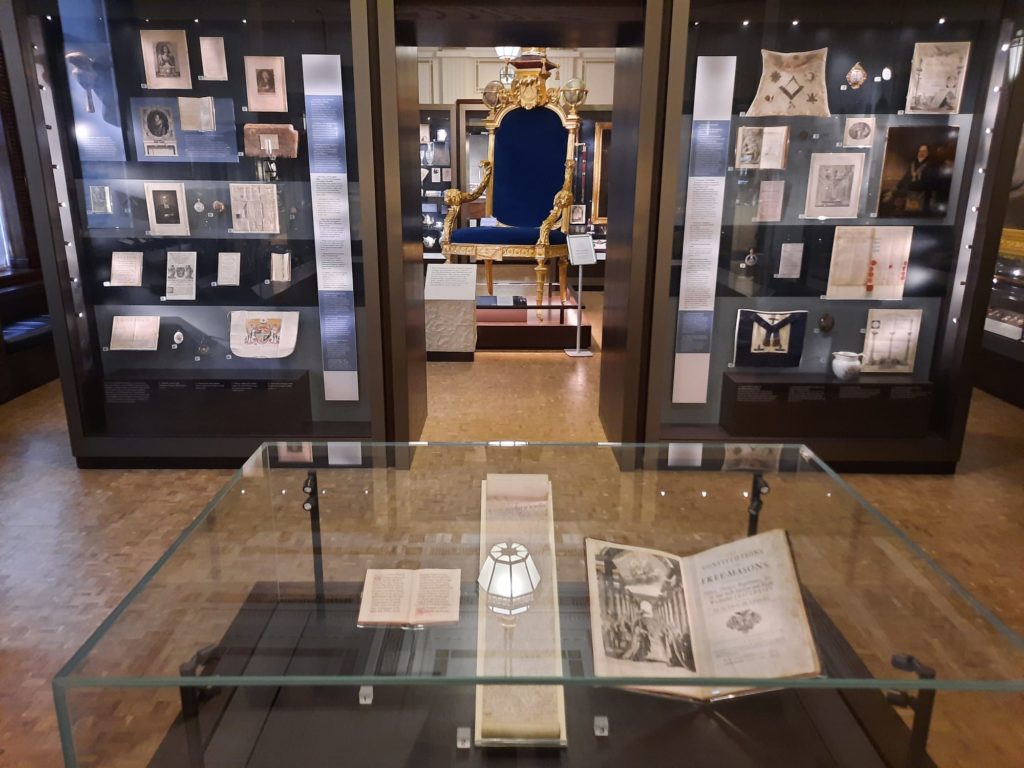
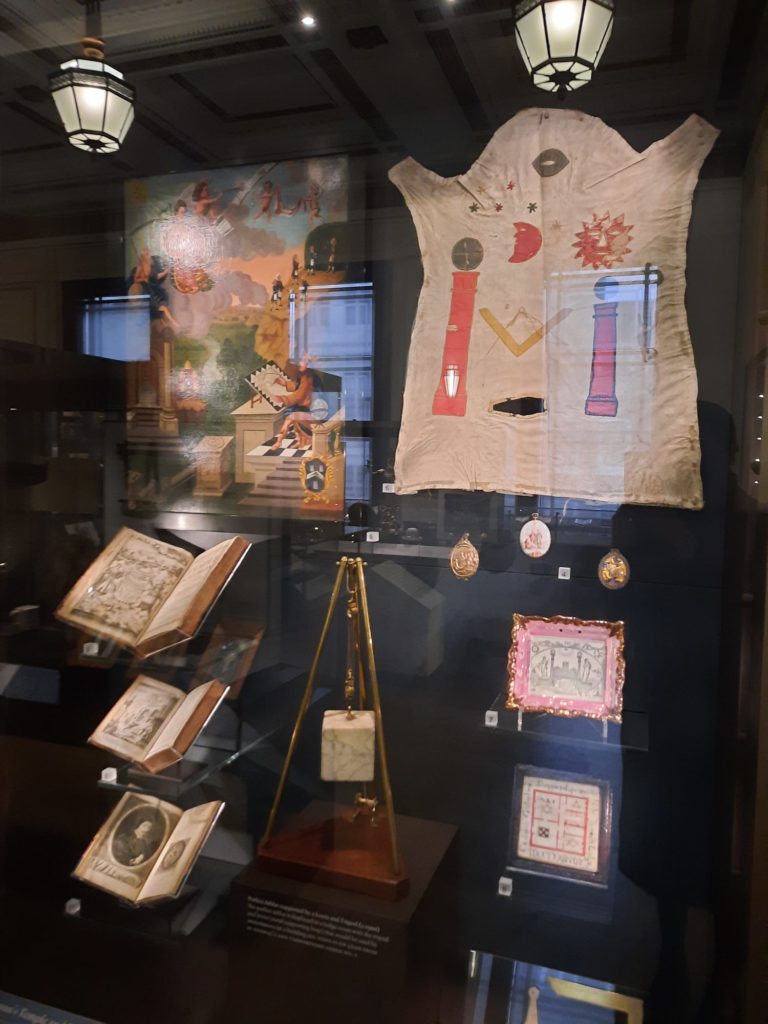

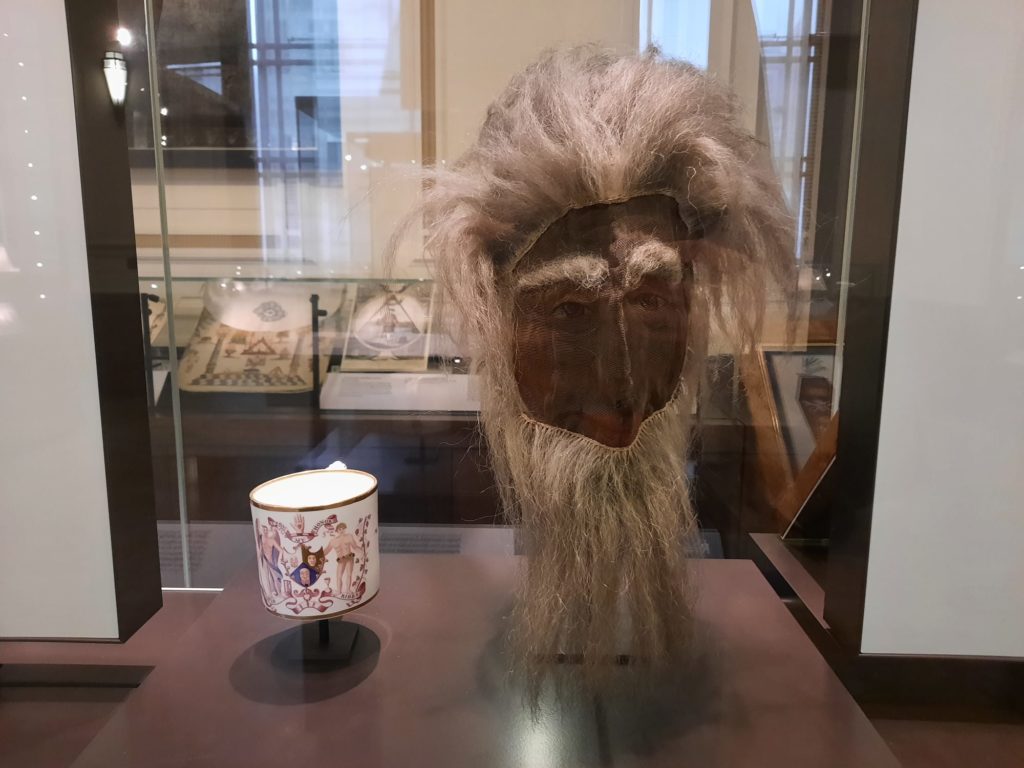
The Museum of Freemasonry
Anyway, if the United Grand Lodge of England were intending to be secret, they wouldn’t have such an imposing Art Deco building. Freemasons’ Hall dates to 1933, although the site has been a masonic meeting place since the 1700s. The architects were Henry Victor Ashley and F. Winton Newman, and the new building intended as a memorial to the Freemasons who had died in WWI.
From the outset, a library and museum were part of the requirements for the new design. The history of the Museum of Freemasonry dates back a little further, however. It was in 1841 that a museum (and library) was first opened, for the use of English Freemasons of the Grand Lodge. Around 80% of the collection today is still a permanent loan from the Grand Lodge. More recent acquisitions belong to a Library and Museum Charitable Trust.
The museum has professionalised over the years. Members of the public were able to visit from the 1980s. It was in 1996 that it became a charitable trust. From 2001 the Museum began to digitise its collections and increase temporary exhibition programming. Today it is a fully accredited museum, its collections ‘Designated Outstanding’ by the Arts Council. Members of the public can visit the museum daily (and also a cafe and a bar elsewhere in Freemasons’ Hall!).
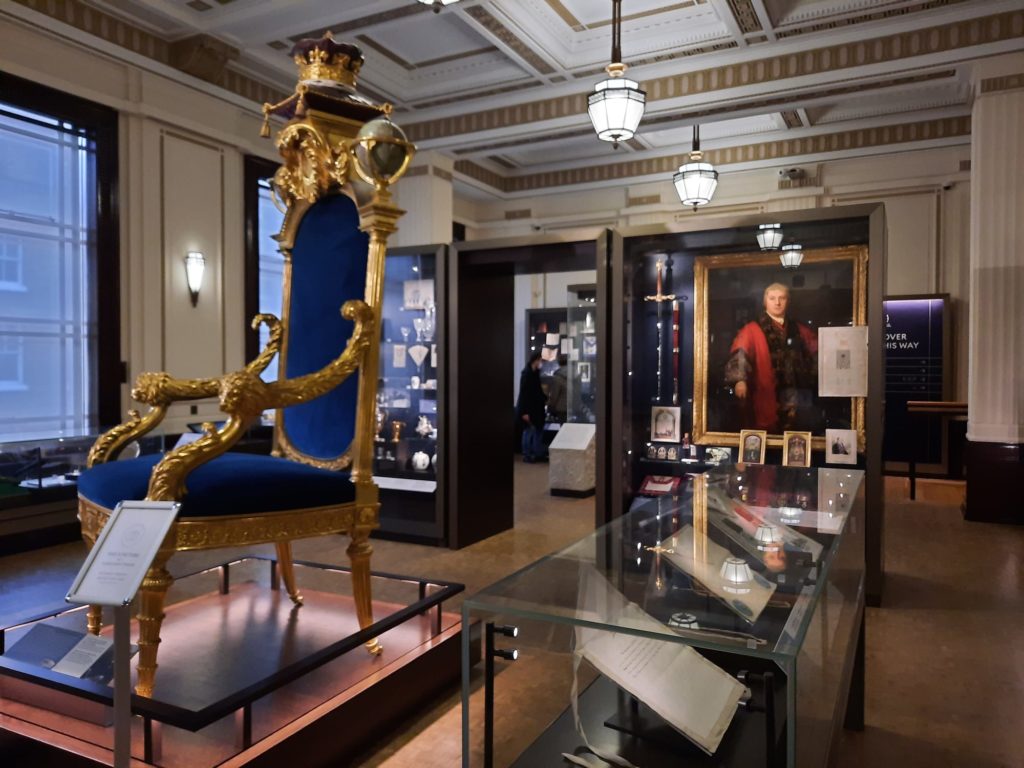

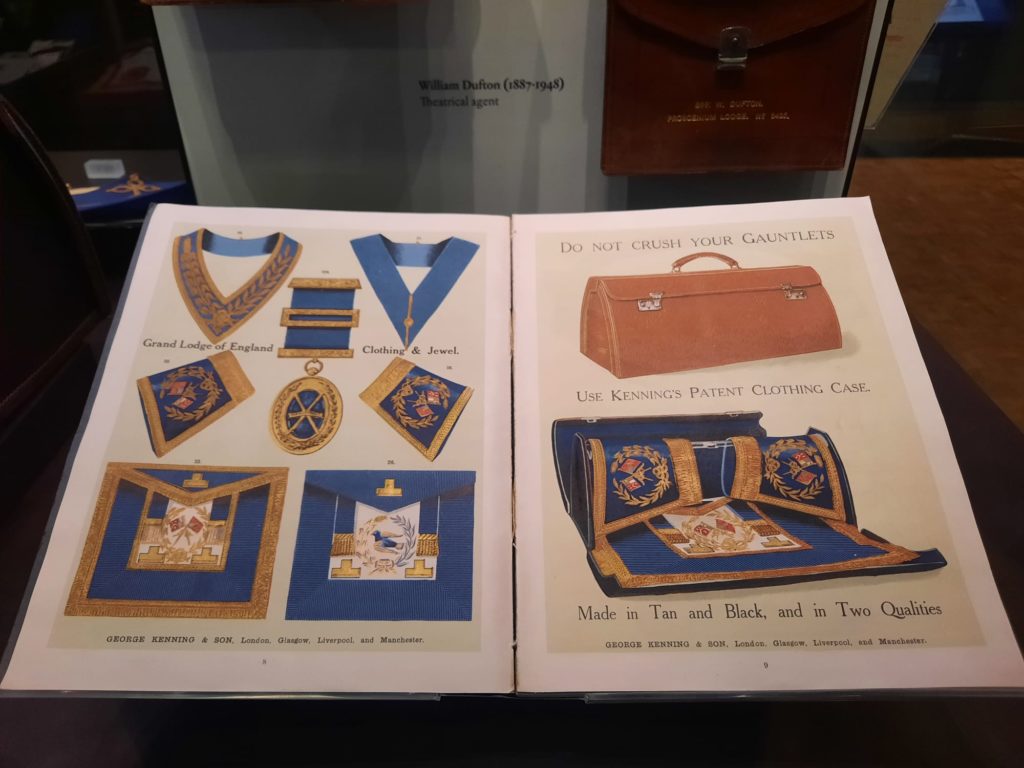
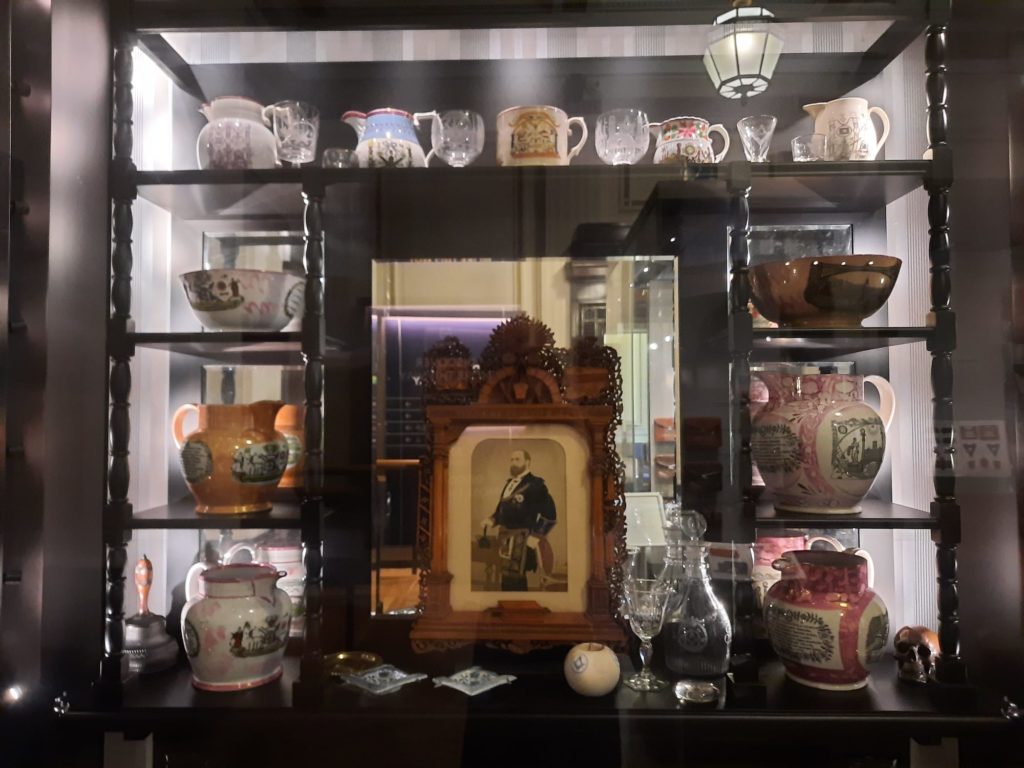
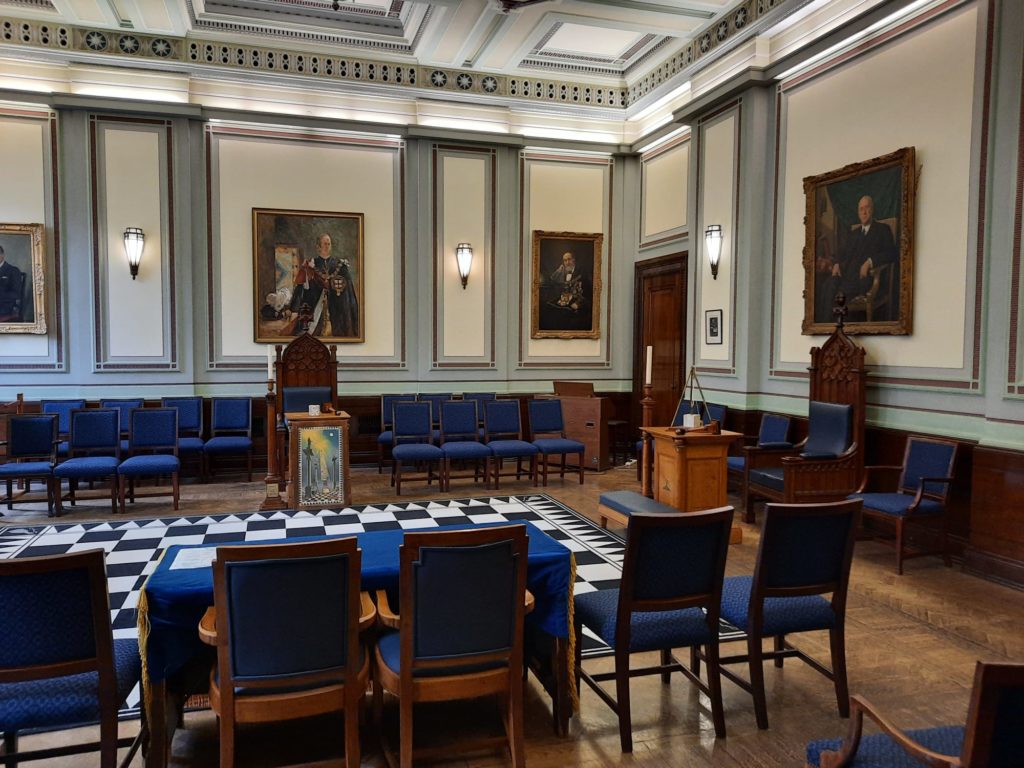
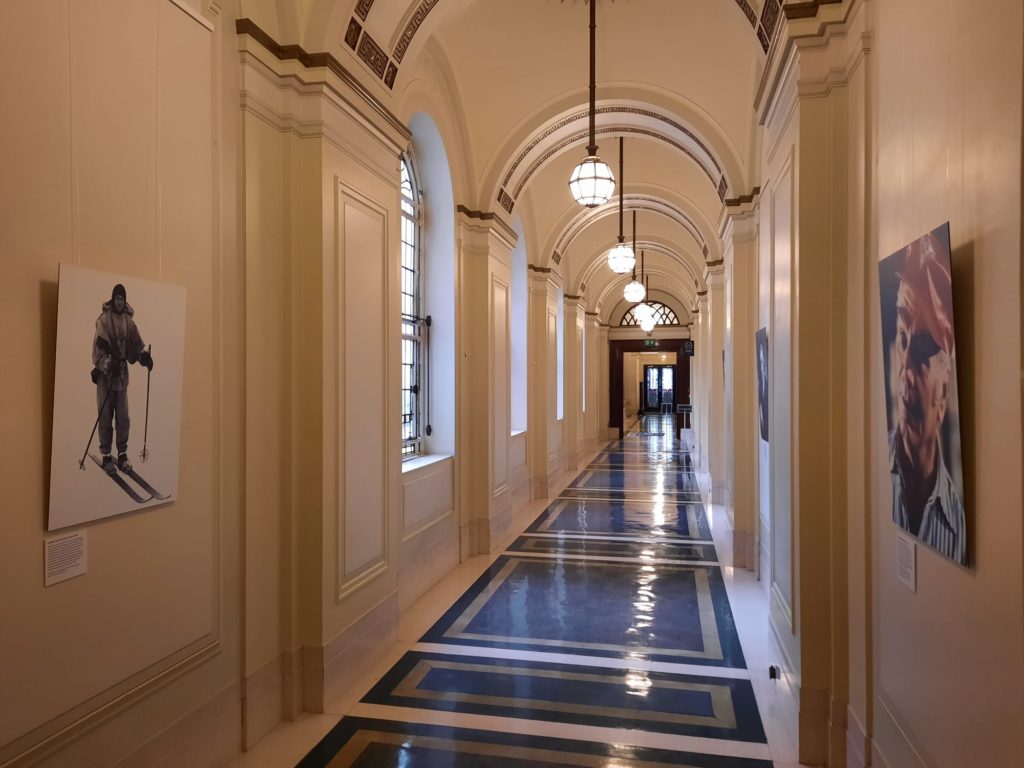
An Introduction to Freemasonry
The United Grand Lodge of England has the following to say about the Museum of Freemasonry:
If you’re a Freemason, the museum is a treasure trove for exploration. If you’re not a Freemason, it’s the perfect place to visit and discover what Freemasonry is all about.
Museum of Freemasonry | United Grand Lodge of England (ugle.org.uk)
I don’t disagree with this, but I did find that the Museum assumes a certain amount of prior knowledge. There is a real wealth of objects on display – historic examples of ritual objects connected to Freemasonry; objects associated with famous Freemasons; objects which tell the story of the history of Freemasonry and its development around the world. But the starting point was a little too expert for me. It’s all well and good to jump straight into fine examples of tracing boards. But what on earth is a tracing board?
There is lots of nice, clear information, so the task of figuring all this out is not impossible. And I suppose it helps retain something of an air of mystery. But the impression I was left with was that I wasn’t quite the core audience for the Museum. There were plenty of other visitors there at the same time as me – they didn’t seem to be quite so perplexed so may have had more of a personal connection to or interest in Freemasonry.
And that is not to say that I didn’t enjoy the museum. There is plenty to see (including a few enormous chairs which are very impressive but hard to photograph in a way that shows the scale). Objects are grouped thematically in interesting ways which break down the story of Freemasonry. And despite the assumption of prior knowledge, the Museum of Freemasonry is very welcoming. A pleasant visit all round!
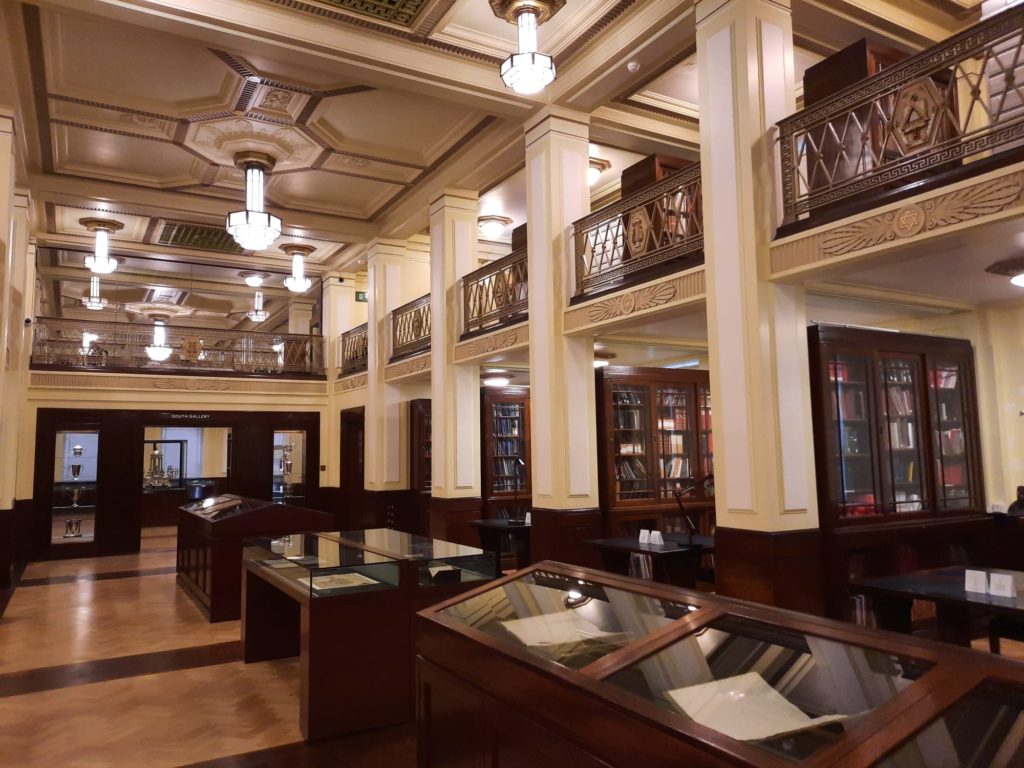

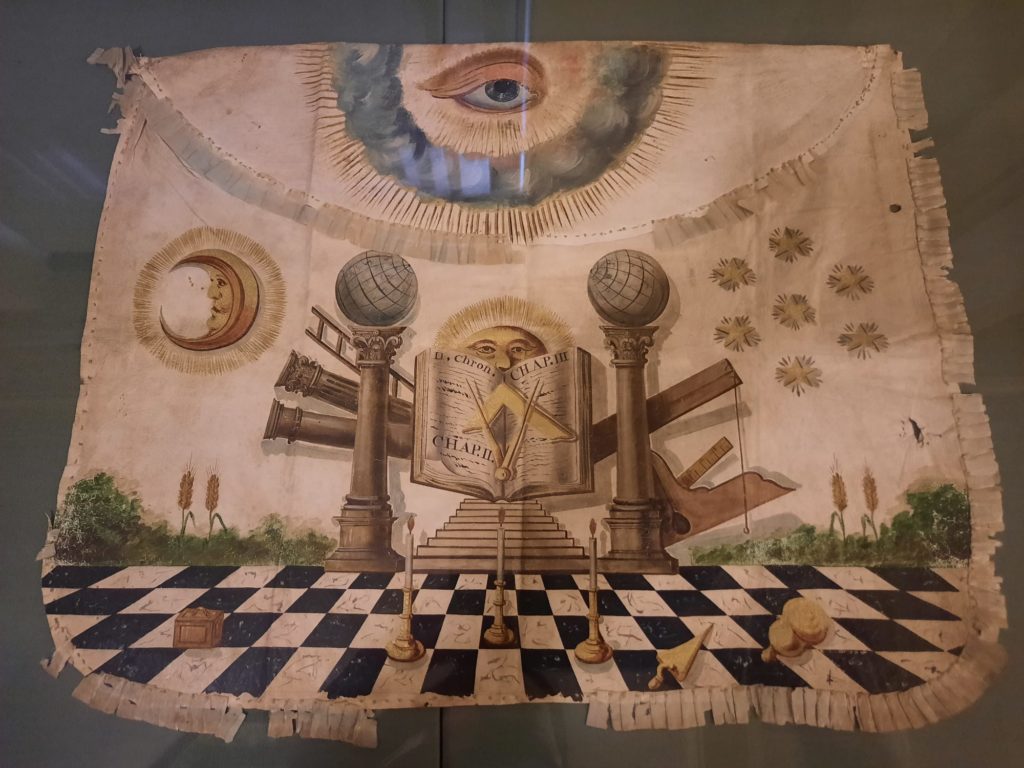
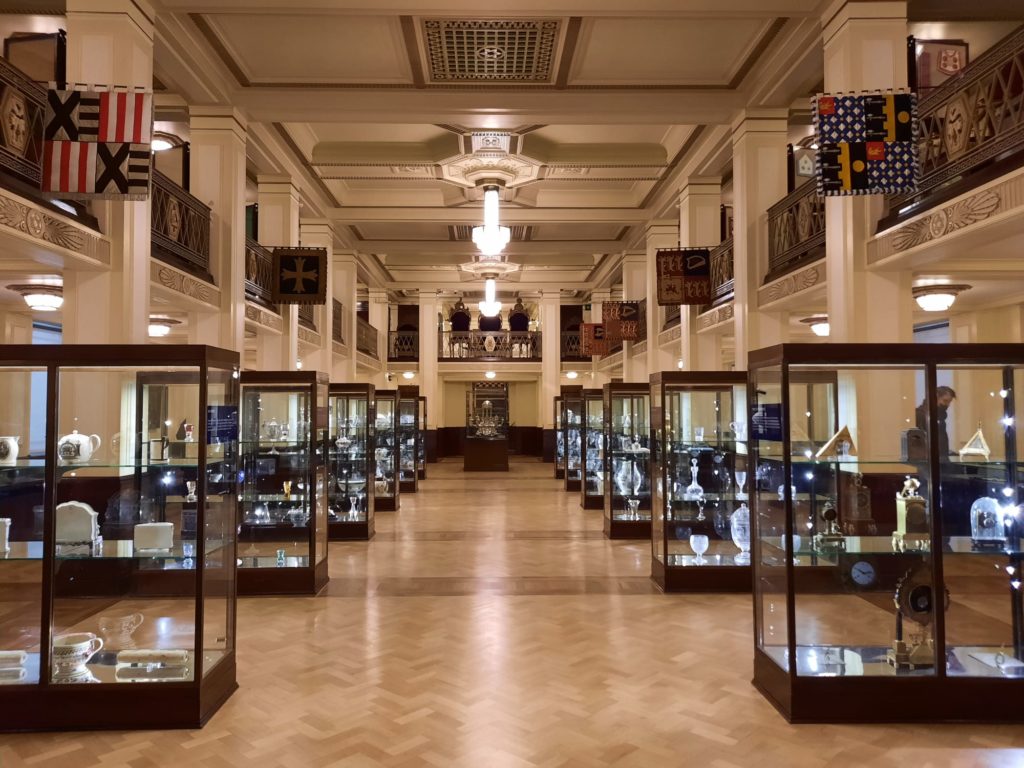
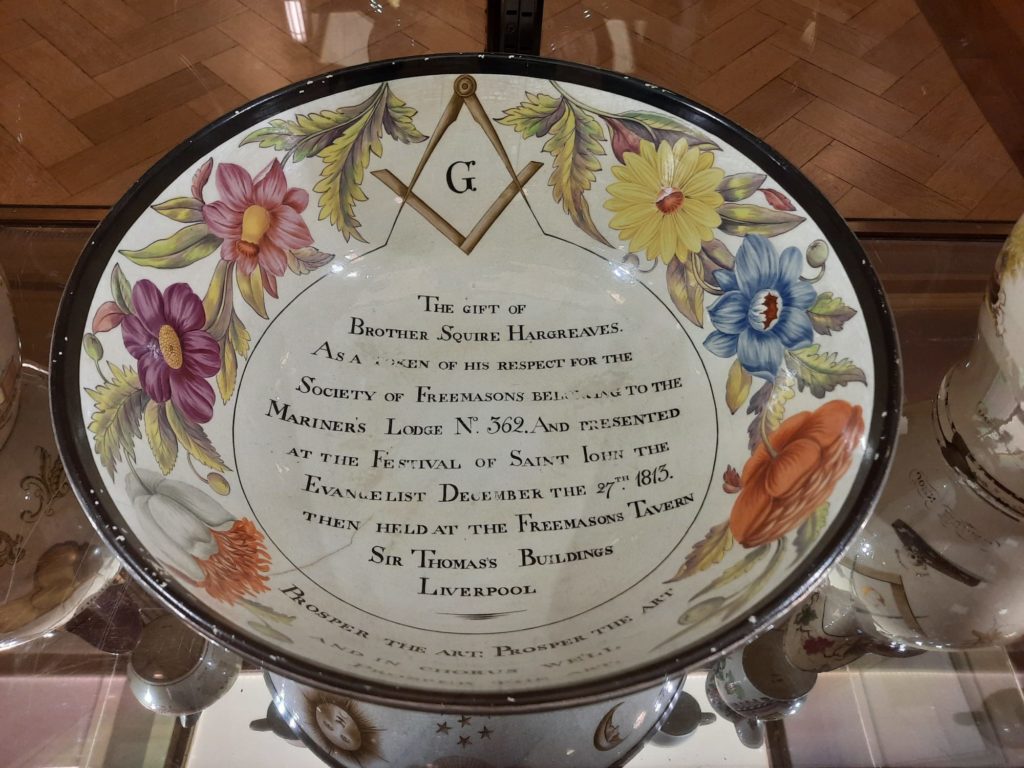

Final Thoughts
I hadn’t quite known what to expect going into the Museum of Freemasonry. I believe both my grandfathers were actually Freemasons, but I had never taken much of an interest in it so had a lot to learn. Despite my perception that I was thrown in the deep end, I learned a lot and enjoyed looking at all the symbolic and ritual objects.
At the same time, it was interesting just to get into Freemasons’ Hall and have a look around! Visitors first explore a large museum space, then go through the Library to get to another exhibition room beyond. The library in particular is gloriously Art Deco. I wish I had masonic subjects to study so I could spend some time in one of its individual cubicles.
So there are plenty of points of interest at the Museum of Freemasonry. The subject matter is unusual. It’s interesting from a museological point of view. The building itself is stunning. And Freemasons’ Hall is such a large landmark between Covent Garden and Holborn that I relished the experience of seeing what it was all about. Definitely recommended for visitors and Londoners alike.
Salterton Arts Review’s rating: 3/5
Trending
If you see this after your page is loaded completely, leafletJS files are missing.

